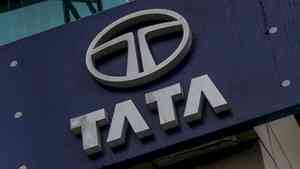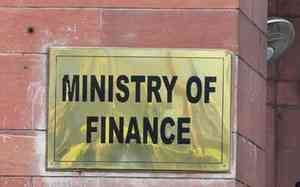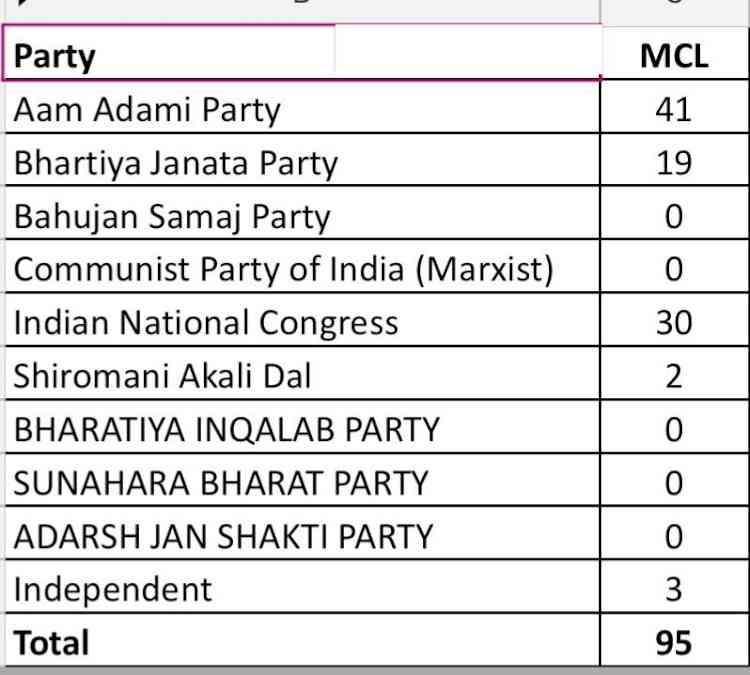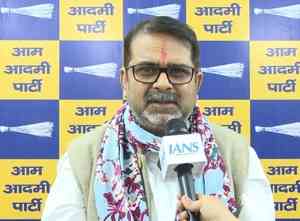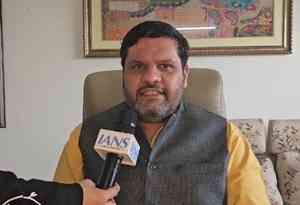Repo rate increased by 50 bps: Industry Reactions
RBI Governor Shaktikanta Das today announced that keeping in line with RBI’s goal of taming inflation, the repo rate has now been increased by 50 bps (0.50%). This has taken the repo rate to 5.4%. Here are the industry reactions:

“Today’s announcement by Governor Shaktikanta Das confirms two priorities for the RBI. First, is reigning in inflation, as signified by the decision to raise the repo rate by 50 bps (0.50%). While this is a critical step in the right direction, these hikes will further add on to the operational expenditure and working capital availability of enterprises. It is thus critical for businesses to now prioritize, and make efficient their working capital management. Working capital is the critical cash which sustains the day-to-day operations of businesses. In fact, a recently published report by J.P. Morgan reveals that macroeconomic factors and monetary policy are going to increase risks to working capital availability of enterprises. It is therefore critical for enterprises to build in-depth understanding of their cash conversion cycles, optimize their financial and supply chain operations, and control expenditures.
Second, is the RBI’s commitment to standardizing and further optimizing the digital payments ecosystem in India. The RBI has proposed enabling Bharat Bill Payment System (BBPS) to accept cross-border inward bill payments. This will enable NRIs to make payments on behalf of family members in India, on BBPS’s interoperable and integrated platform. With over 20,000 users and approximately 8 crore transactions processed monthly, BBPS has emerged as an important one-stop platform for standardized and recurring digital payments. This proposal will further accelerate the digital infrastructure needed to facilitate cross-border payments between Indians and the world.”
Rupesh Nambiar, Chief Financial Officer, Global PayEX
“The August meeting of MPC was one of the most crucial ones as the Indian economy is at a very critical juncture. While the RBI decided to hike the interest rate again by 50 bps to 5.40%, the SDF (Standing Deposit Facility) stands adjusted to 5.15%. Meanwhile, the Repo rate is back to pre-pandemic levels and has been at its highest since August 2019. At the same time, the inflation in agri-commodities around the globe is showing no signs of abatement while the Russia-Ukraine war still continues. An upward revision will impact the sentiments of home buyers, who have remained positive despite the last set of revisions that led to a rise in home loan interest rates.”
Rohan Pawar -CEO of Pinnacle Group
“MPC announcements this morning were largely on expected lines. The markets had broadly priced in 50 bps hikes in Repo rates and any forward guidance would have mattered more than the rate action itself. The policy statement however, stayed away from any explicit forward guidance while remaining consistent on its assessment of growth and inflation trajectory for the economy. Any mention of nature and quantum of intervention, to manage currency faced with huge capital outflows didn’t find a place as well. Nevertheless, given the growth-inflation outlook, further hikes towards 6% terminal repo rate seem imminent, even though the pace of hike will likely be softer going ahead. Continued ‘focus on withdrawal’ indicates further drawdown of excess liquidity as well, in which case, monetary tightening is far from over yet”.
Rajni Thakur, Chief Economist, RBL Bank
“The RBI delivered a textbook policy announcement today – one that is frontloaded and aggressive in response to inflation that remains high while the growth momentum remains reasonably positive. Accordingly, the RBI kept its inflation forecast unchanged at 6.7%, sounding caution on uncertainty around inflationary pressures despite the recent moderation in global crude oil and metal prices. The central bank kept its stance unchanged at “withdrawal of accommodation” signalling yet again that the notion of stance is being defined by the liquidity in the system and in turn the overnight rate.
Unlike previous policies, the central bank also focussed on the resilience of external balances implicitly communicating its preference for not just a less volatile rupee but also perhaps some resistance towards very sharp depreciated levels of the rupee.
We expect the RBI to continue with its rate hikes in the upcoming policies taking rates up to 5.75% by the end of the year. The bond market rally seen over the last few days is likely to reverse and we expect the 10-year paper to trade closer to 7.3-7.4% by the end of the quarter as markets reprice in RBI action and the supply of both SDL and central government bonds this year.”
Abheek Barua, Chief Economist and Executive Vice President, HDFC Bank
"Keeping the current market conditions and inflation in mind, the move by RBI was expected to keep the economy on the track in the current highly volatile scenario. The rising prices of raw materials had already added to the woes of the developers and now the decision of RBI to increase the repo rate will temporarily dent the current demand momentum. Also, for first-time home buyers, acquiring a home is considered as the biggest asset and these short-term decisions are likely to have a major impact on a buyer’s decision."
Himanshu Jain, VP - Sales, Marketing and CRM, Satellite Developers Pvt. Ltd. (SDPL)
"After two years of unchanged repo rate, RBI 's decision to hike the interest rates to tackle the inflation and ensure domestic economic recovery was a no-brainer. The sharp acceleration of rates consecutively for the third time in a short period may have a short-term effect on the sentiment of homebuyers as low interest rates have been the biggest factor in the resurgence for real estate demand in the last two years. We hope that the State Government will step-in to lighten the homebuyer’s load by reducing stamp duty ahead of the festive season."
Pritam Chivukula - Co-Founder & Director, Tridhaatu Realty and Treasurer, CREDAI MCHI
“The recent consecutive rate hikes by the RBI were aimed at re-anchoring the inflation expectation and strengthening the economy. Thus far, the rise in property prices due to the increased interest rates, metro cess and higher stamp duty had not affected real estate sales over the last few months, thereby confirming that there is genuine demand for housing. But this move by the RBI to hike the repo rate again might temporarily limit the growth momentum of the real estate sector."
Kaushal Agarwal - Chairman, The Guardians Real Estate Advisory
''With the upward trajectory in interest rates firmly established by RBI, the homebuyers while feeling the pinch in the short term may rush to purchase their homes and lock in their home rates at the earliest. This has been the trend in the last quarter, and we see that trend accelerating in the coming two quarters as well. Based on the sales data of the last two quarters, even post the rate hikes, the off season sales are at an all time high. The fear of rising property prices and further interest rate hikes is only further fueling the latent demand conversion. With limited inventory close to readiness, the demand for ready or close to possession homes will see an exponential increase in the coming quarters.''
Cherag Ramakrishnan, Managing Director, CR Realty
"RBI's decision to hike the policy rates for the third consecutive time was anticipated on the back of high inflation and economic recovery. We had already started seeing a vertical movement in the home prices from the past couple of months which had a minimal impact on the housing demand. But, this decision will further put a dent on the homebuyer's sentiments impacting the overall demand for a short period of time."
Shraddha Kedia-Agarwal, Director, Transcon Developers
"The decision by the RBI to hike the repo rate to pre-pandemic levels was anticipated to keep the inflationary expectations under check. This move may impact the overall growth of the industry by dampening sales momentum while property prices are already on rise. However, we believe that this will also encourage the fence-sitters to make the most of the current schemes offered by developers in the market and take the plunge."
Jitrendra Shah, Managing Director, Rockford Group
"Due to the pandemic and the geopolitical issues, the input costs were already high and now with these consecutive rate hikes, it will only dampen the spirit of the entire real estate value chain. The cost of borrowing for both developers and buyers will be impacted and this will result in undesired rate hikes across the spectrum. However, we did not see much impact on the buying spree in the last couple of months since there are genuine buyers in the market to keep the momentum going."
Bhushan Nemlekar, Director, Sumit Woods Limited
"RBI’s decision to hike the key policy rates for the third time in a row will have a serious impact on the housing loan EMIs but we are still bullish about the real estate sector the way it has performed in the past few months. Yes, homebuyers are concerned about the skyrocketing property prices but we believe that this move may push homebuyers who are still deliberating to seal the deal. However, we urge the Government to take some necessary measures to control the rise in property prices so that it will help to boost the demand in the upcoming festive season."
Jitesh Lalwani - President, HomeSync Real Estate Advisory
"RBI's decision to hike the policy repo rate was anticipated, factoring the rise in inflation. The rate hike is likely to shrink liquidity in the economy overall, especially impacting the investor’s sentiments. There will be a short-term pause on the minds of the investors while assessing the volatility of the current market dynamics. However, they are bound to return soon in the market as the festive season commences.’’
Dr.Sachin Chopda, Managing Director, Pushpam Group
“Aligned to the US FED rate raise, the RBI also increases the Repo rate. With several demons to slay, the RBI seems to have chosen taming inflation as its primary goal. Growth forecasts have not been moderated based on strong fundamentals – with larger impetus expected from domestic economic activities. Coupled with this is the policy thrust of insulating India against imported inflation. It is therefore critical for the domestic stakeholders to rise to the occasion, of delivering the growth promises. Quicker resolution of stressed loans may also give that extra push of ensuring domestic credit expansion. Concomitant policy push in these directions are also necessary. RBI’s efforts in further strengthening the financial institutions, players and products is a welcome move. Setting up the committee to develop alternative benchmark rates is in line with the global trends and should help in appropriate market- linked price discovery for credit.”
Soumitra Majumdar, Partner, JSA (Law Firm)
“The RBI again raised key benchmark rates by 50bp for the third consecutive time and now the repo rate is back to pre-pandemic levels. The committee has remained focused on calibrated withdrawal of accommodation to ensure inflation remains within the target while supporting growth. The RBI stated although domestic economic activity is showing signs of broadening, Indian economy still faces global headwinds like geo-political risks and high inflation. The domestic recovery is supported by relatively stable urban demand while rural economy is showing mixed trends. FY23 Real GDP forecast has been retained at 7.2%. On the inflation front, while CPI has eased from its surge in April but remains uncomfortably high and above upper threshold of target. FY23 Inflation projection is retained at 6.7% on assumption of normal monsoon and crude oil at USD 105/bbl. On the liquidity front, excess liquidity in the banking system has moderated to Rs 3.8 lakh crore from Rs 6.7 lakh crore in April-May. The RBI will undertake both VRR and VRRR operations depending on the evolving liquidity and financial market conditions. On the currency front, the RBI has undertaken various measures to curb volatility in exchange rate and ensure stability of Rupee. The committee also listed other measures – 1) enable standalone primary dealers to offer all forex market-making facilities, 2) Bharat Bill payment system to accept cross border inward bill payments by NRIs. Overall, the policy was on expected lines with growth and inflation targets being unchanged and RBI reiterating to manage monetary and financial market conditions in a calibrated and proactive manner.”
Dr Poonam Tandon, CIO, IndiaFirst Life Insurance Co. Ltd
“In line with our expectations, the RBI announced a hike in the repo rate by 50bps to 5.4% and retained its policy stance at 'withdrawal of accommodation'. This is the third consecutive hike in repo rate, in order to tame inflationary expectations. The challenges on the global macro front continue to persist with high crude oil prices, protracted geopolitical tensions, upsurge in global financial market volatility and tightening global financial conditions. Amidst this, the RBI retained its FY23 GDP forecast at 7.2%, given that there has been ample amount of broadening in India’s economic activity and several factors pointing towards strengthening of urban demand. However, the rural demand is yet to revive fully and we will be watchful of the same. One significant development proposed by the RBI is to enable Bharat Bill Payment System (BBPS) to accept cross-border inward bill payments. We believe this will help entities with cross border remittance licenses like us enable easy payments from NRIs who otherwise have been facing challenges in utility bill payments on behalf of their families in India. The RBI remains committed towards maintaining price and financial stability and we believe that despite macro headwinds, the Indian economy has been fairly resilient. This keeps us optimistic that both urban and rural demand for gold loans will hold steady for FY23.”
George Alexander Muthoot, MD, Muthoot Finance
"Jarvis Invest AI propriety tool (‘JARVIS’) comes up with the exit and rebalance calls for a multitude of reasons. These could vary at a stock level or even at the sector level. What we have observed in recent times is an increase in allocation towards sectors like Pharma, Financial Services, IT and Industrial Manufacturing. At the same time, the sector allocation towards Consumer goods and Automobile has reduced.
Globally, we were all fighting more or less the same battle for the past few months. Inflation, slowdown in global demand, the war in Ukraine, high crude prices, etc. Locally, we were under tremendous pressure due to global geo-political tensions, global financial market volatility, Rupee at almost 80 to the dollar, Brent going beyond $120, FIIs taking money out, among other things. While this painted a grim picture for India, we always reiterated the resilience of Indian economy and the confidence in "India" story which was proved right by JARVIS through its recommendations. JARVIS, the AI proprietary tool did recommend staying in cash for a while and it again started deploying funds in the past 2 weeks as it observed reduced volatility and some positive news on the horizon.
While the RBI has hiked repo rate by 50bps today to 5.4% - levels seen since the beginning of the pandemic, the RBI also retained FY23 GDP growth projection to 7.2% on the back of resilience of domestic economy, strengthening in urban demand, pick up in investment activity & capacity utilisation. While the Indian Rupee has depreciated against the USD, it has relatively performed well against other currencies. Recently, FIIs have pumped in close to INR 5,000 crores in the stock market, the GST collection numbers and the PMI levels for July indicate that we are on the road to recovery. However, this doesn't mean that we are completely out of the woods.
The caution here is evident from JARVIS recommendations as the system has recommended higher allocation to Large Caps and reduction in allocation to Mid Caps. At the same time, JARVIS system has allocated more towards small caps. The kind of roller coaster ride that we have witnessed in the markets in the past one year, bias or heuristics of any sort would have spelt disaster for investor's money. JARVIS has been playing a splendid role in protecting investor money and has become a beacon for our belief in "Emotionless" Investing."
Sumit Chanda, Founder and CEO, JARVIS Invest
“RBI’s decision to increase the repo rate for the third consecutive time by 50 basis points was on the expected lines to tame retail inflationary expectations. While there has been some recent respite in global commodity prices, overall global factors like elevated crude oil prices, supply side disruption, geo-political tensions, global financial market volatility and tightening global financial conditions do weigh on the macro front. On the other hand, there is pick up in investment activity, capacity utilization is above long term average and high frequency indicators suggest pick-up in economic recovery. This keeps us fairly optimistic on India growth recovery and we believe Indian economy continues to demonstrate resilience amidst global headwinds. The recent record of UPI transactions of 6 billion in July suggests the rapid adoption of digital payments in the country. We believe the RBI’s recent decision to link Rupay credit cards to UPI will further provide a big boost to digital payments ecosystem. RBI’s conceptualized ecosystem Bharat Bill Payment System (BBPS) driven by NPCI is a one stop ecosystem for all bill payments across India. The RBI today proposed to enable BBPS to accept cross-border inward bill payments, this further highlights the robustness and maturity of India’s payment infrastructure.”
Avinash Godkhindi, MD & CEO, Zaggle
“RBI has taken a measured stance in its latest monetary policy. Its calibration has to be seen in the macro perspective of trying to balance both growth and inflation amidst volatile times. An increase of 50 bps in the repo rate may seem hawkish, but it is required to numb the inflationary trends. This is the third time in quick succession that the RBI has increased rates. The earlier revisions have spurred economic activity proving its utility. However, the real worry is inflation which is forecasted at 6.7% for FY23 with retail inflation being the chief culprit. I am hopeful that given our strong economic fundamentals and better cash reserves, the repo rate hike will contribute positively in helping India overpower the dragon of inflation.”
Murali Ramakrishnan, MD &CEO, South Indian Bank
(August 5, 2022)


 City Air News
City Air News 

